Space exploration has always been a fascinating and ambitious endeavor for humans. Throughout history, we have seen many spacecraft designs that have been successful and have achieved incredible feats. However, not all spacecraft designs have been successful, and some have never made it past the design phase. In this article, we will explore some of the craziest and most interesting spacecraft designs that never made it to launch. From the wacky to the absurd, we will dive into the stories behind these failed designs and the reasons why they never made it to space. Time for you to be the judge, and see if some of these spacecraft designs deserved to be built or launched.
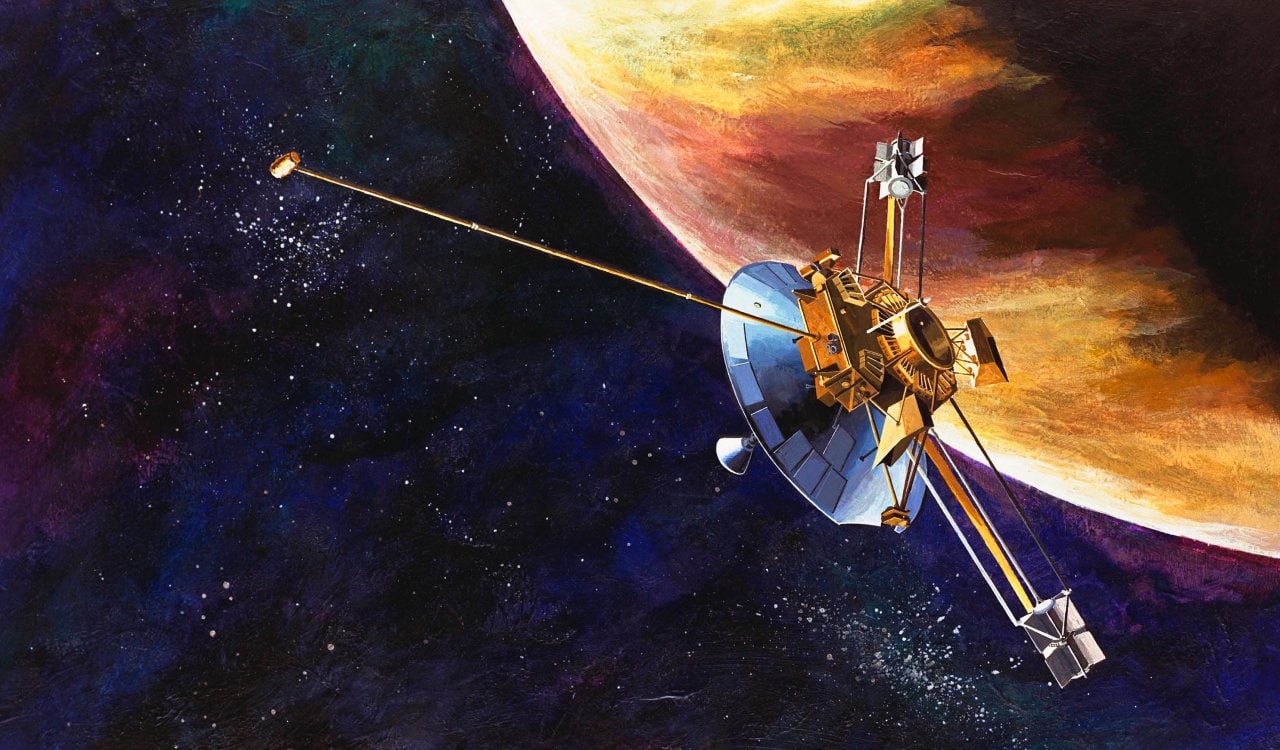
Pioneer H Spacecraft
- Concept Led By: NASA/Ames Research Center
- Companies Involved: TRW Systems Group
The Pioneer 10 & 11 missions were a huge success for NASA, as they saw both Jupiter and Saturn, giving us our best early looks at the two gas giants. Yet there was another spacecraft design that would have been Pioneer 12. Known today as Pioneer H, the plan for this spacecraft was for it to be unmanned and use a gravity assist by Jupiter to travel above the ecliptic plane of our solar system. The goal would be to study the effects of the Sun on the solar system and how it interacts with interstellar space. A bit of history here is that this was the very first Out-Of-The-Ecliptic or OOE mission ever proposed, as a formal mission study was proposed in 1974.
NASA quickly approved the mission concept and contracted TRW Systems Group to build it. The NASA/Ames Research Center would have managed the project should it launch. However, it never did get to the launch phase. While the craft would be built by 1976, without the radioisotope thermoelectric generator, it was only for the Smithsonian Institution. Since the mission never happened, it was used by National Air and Space Museum as a replica of the Pioneer 10 spacecraft. While the Pioneer H never launched, the mission concept was finally realized by the 1990s in the Ulysses Mission then again in the 2010s in the Juno mission.

Solar Sails
- Concept Led By: Numerous
- Companies Involved: Only JAXA
Several government space programs, as well as private aerospace companies, have discussed the idea of using solar sails over the years. What are they? Essentially, think of them as you’d think of a sailboat. The sails use the wind to help the watercraft move on the water. You see a similar idea with solar sails. Instead of wind, the main driver of movement for a spacecraft would be energy given to it from the Sun. In space, the Sun is much more powerful as it does not need to break through a magnetosphere or atmosphere to work. Solar sails use the solar energy our Sun as well as stars in general provide.
The cool part is that the solar energy in space from our Sun, as well as other stars, is pretty immense. Allowing us to use solar sails possibly beyond Planet 9! However, this concept was a pipedream in the 1980s and 1990s. Several plans were developed that never made it beyond the planning stage. That all changed when the Japan Aerospace Exploration Agency or JAXA sent IKAROS into space in 2010. This spacecraft design used a solar sail and flew by Venus, managing to successfully travel over 50,000 miles. This was massive progress that proves solar sails can be successful. Yet nothing has been made using solar sails as a main power source for spacecraft since.
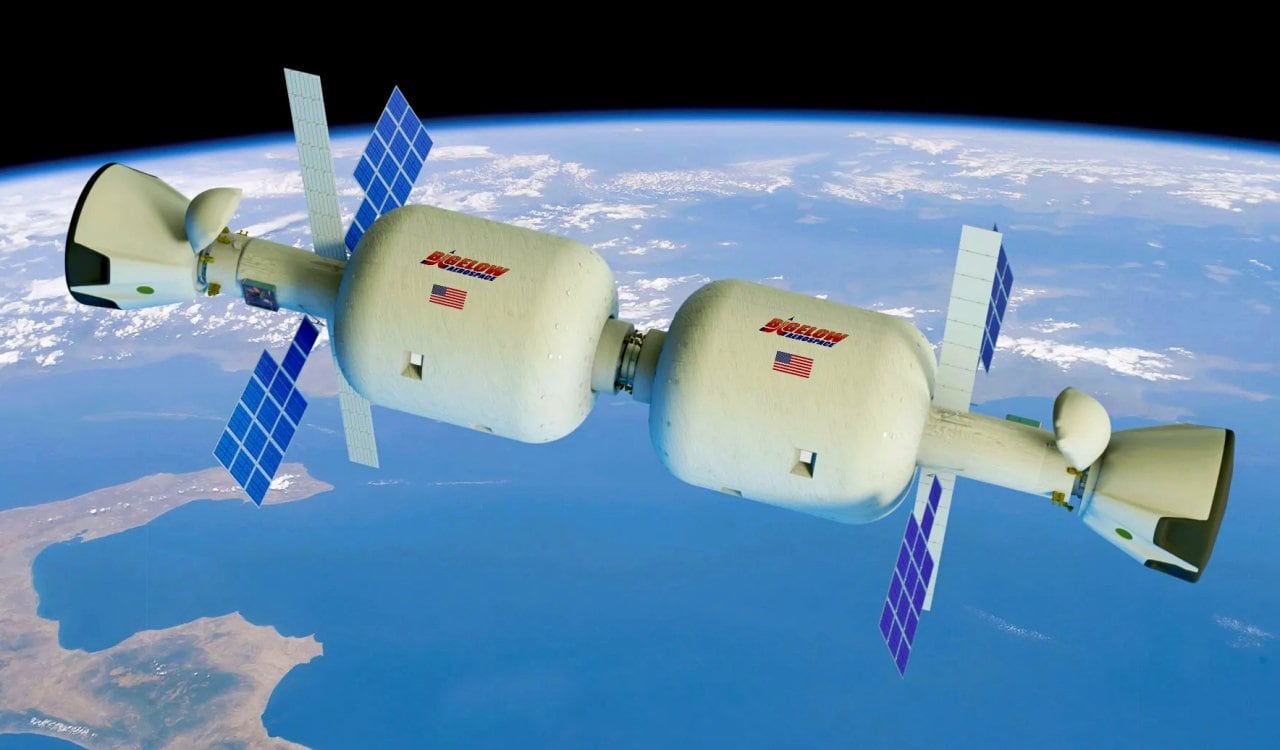
Inflatable Space Stations
- Concept Led By: N/A
- Those Involved: N/A
Back in the 1960s and 1970s, we did not really understand outer space as well as we do today. In the early 1960s, no one had exited our atmosphere successfully. It was not until the Russians did so that the United States became serious about going as far as the Moon. Yet many dreamed of the idea of a space station in orbit once we landed on the Moon. The thought back then was that if we can get to the Moon, soon we’ll do much bigger things. Oh how funny we were back then, eh? While we’d eventually have the International Space Station decades later, engineers began thinking about a space station long before.
Many thought of space as being without any gravity at all, therefore, you could probably just inflate a space station and send it up into space. This is sort of true, for if this inflatable space could make it through the atmosphere (though unlikely), it would eventually reach low orbit. However, gravitational pressures get pretty immense. People seem to think of space as lacking gravity. While true, planets and even moons have gravity and a space station needs to be able to handle this plus things like solar flares and space debris. Inflatable space stations could never handle this, so most were never made. That has not stopped “some” from trying though.
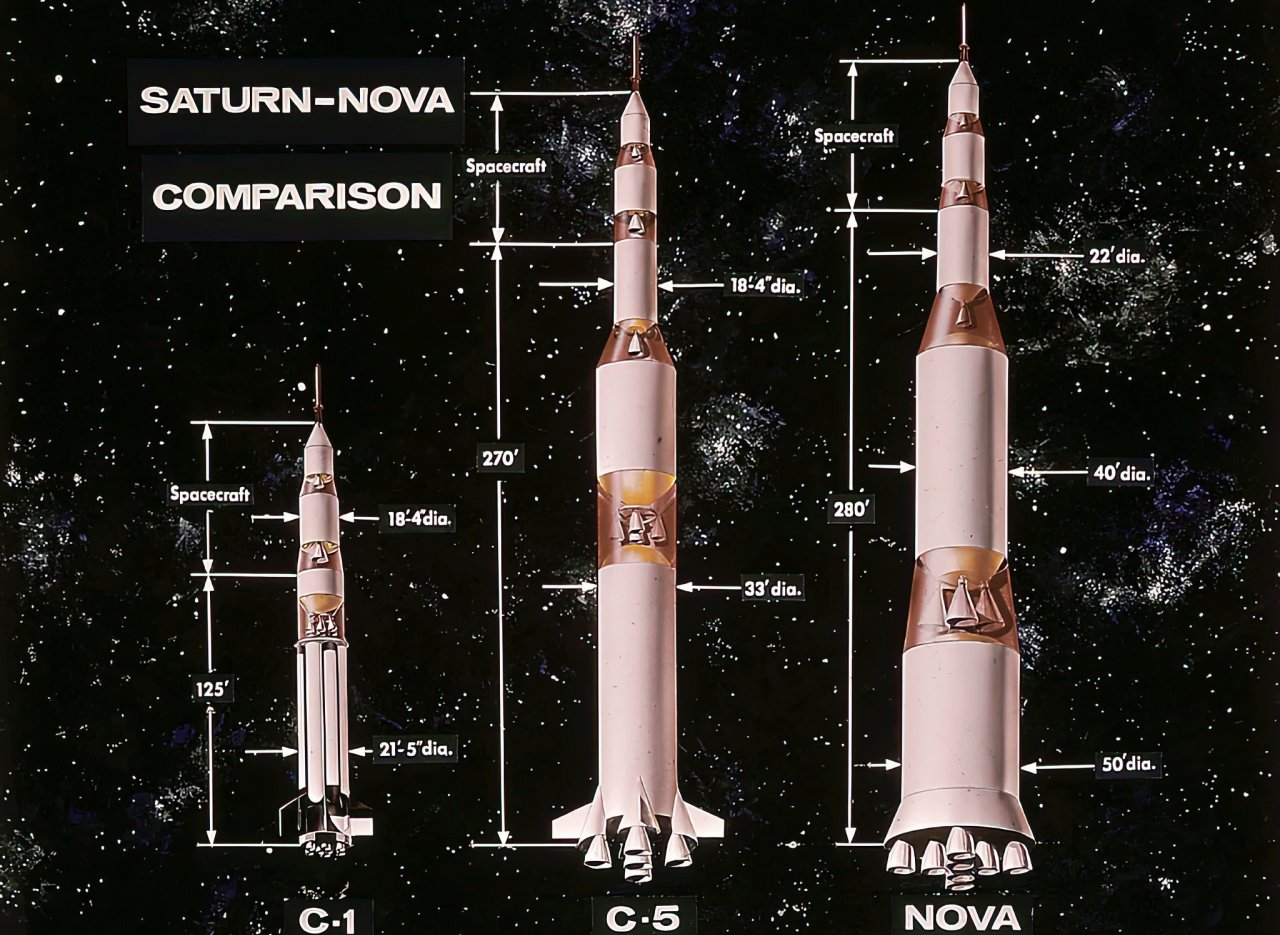
NOVA Rockets
- Concept Led By:NASA
- Companies Involved: Aerojet, General Dynamics, & Martin Marietta
Always the space bridesmaid… never the space bride. That is the story of the NOVA Rocket spacecraft designs. They were proposed both before and after the Saturn V rocket used for the Apollo Program. It was NASA’s first large launch system and originally proposed in 1958. In fact, it was proposed for exactly what the Saturn V would go on to be used for. The NOVA and Saturn V designs heavily resembled each other when it came to their basic makeup, even down to power, size, and function. The differences were mostly minor but technically practical. Why would the Saturn V get the ring while NOVA didn’t by NASA?
It came down to the fact that the Saturn V would reuse already existing facilities to a greater extent. Plus, it would be capable of making it to launch a little earlier. Of course, this was the height of the infamous “space race” so something getting done faster was a big deal for NASA. Later, for post-Apollo studies and possible crewed missions to Mars, there was a need for boosters much larger than what the Apollo had. Several designs using the Rocketdyne F-1 engines used the “Nova” name, even though it was not part of the original NOVA rockets. Since then, the “Nova” term does not refer to a specific rocket design just those larger than the Saturn V rocket.

Project Daedalus
- Concept Led By: British Interplanetary Society
- Companies Involved: None (No Spacecraft Was Commissioned)
Being named after the Greek mythological designer and father of Ikaros, you’d think Project Daedalus would have gotten off the ground. Turns out, naming a project after a Greek tragedy was a bad omen. Project Daedalus came crashing down before it really went anywhere. We should first mention this is unlike the other spacecraft designs we’ve referenced because Project Daedalus was mostly just a study conducted by the British Interplanetary Society from 1973 to 1978. Their job was to figure out a design that could plausibly be a useful unmanned interstellar probe. It would be intended simply as a scientific probe, but there was a catch.
It would need to be designed using both existing or near-future technology and would need to be capable of reaching any destination it was sent to within a reasonable human lifetime, which would have been within 70 years. A team of scientists and engineers was led by Alan Bond, a mechanical and aerospace engineer. Their concept was the use of a fusion rocket that would reach Bernard’s Star 5.9 lightyears away. Their spacecraft design would take an estimated 50 years, but it would need to be capable of being sent to another target star. No rocket or spacecraft was ever made using this study by the BIS. They have still never built a spacecraft nearly 50 years later.
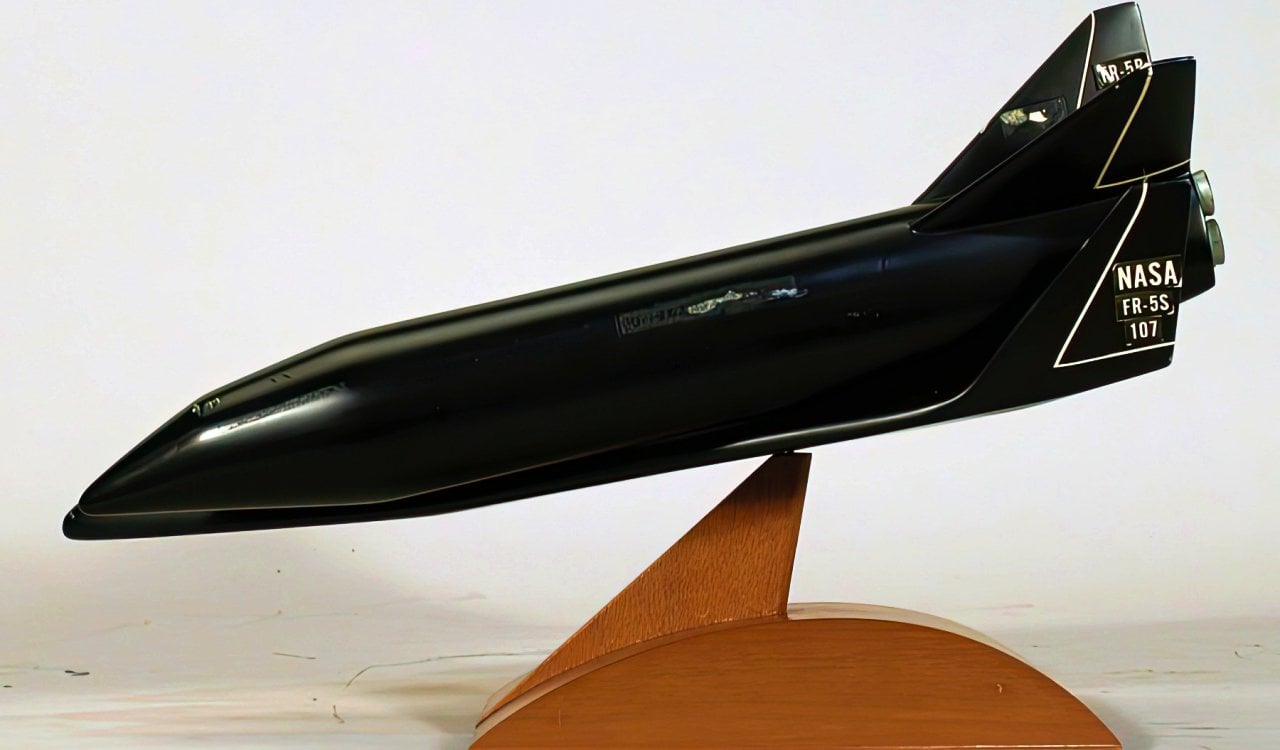
Martin Marietta Spacemaster
- Concept Led By: NASA/Lockheed Martin
- Companies Involved: Martin Marietta/Lockheed Martin
It is unlikely most people today have heard of Martin Marietta, but you may recognize another name. They merged with a little company called Lockheed in 1995 to form Lockheed Martin. Before this, the Martin Marietta company came out of a previous merger with the Glenn L. Martin Company and American-Marietta Corporation back in 1961. Before the Lockheed merger, Martin Marietta had an idea for spacecraft. The Spacemaster used an X-24-derived orbiter and a weird catamaran-style booster stage. Both during the launch and ascent, the orbiter would be located in a recess in the booster. The booster’s 14 different engines would be located in clusters of seven, at the bottom of both halves of the booster.
It lacked any external tank and boosters were joined together, mostly via the connection of struts which also served as the mounting for the orbiter. This initial Spacemaster design just could not work for NASA in 1967, but most of it seemed to fit and would go on to be the core of the Space Shuttle used for decades from 1981 to the 2010s. The biggest difference between the Space Shuttle and Spacemaster was the external tank, which Martin Marietta developed by the late 1970s. The final STS Space Shuttle design also used unjoined boosters. Those boosters were developed in a joint venture by Boeing and Rockwell International. This newer Space Shuttle lasted from the mid-1990s to 2011, after this point the Space Shuttle was retired. Today, you can see the original Spacemaster at the Smithsonian National Air and Space Museum.
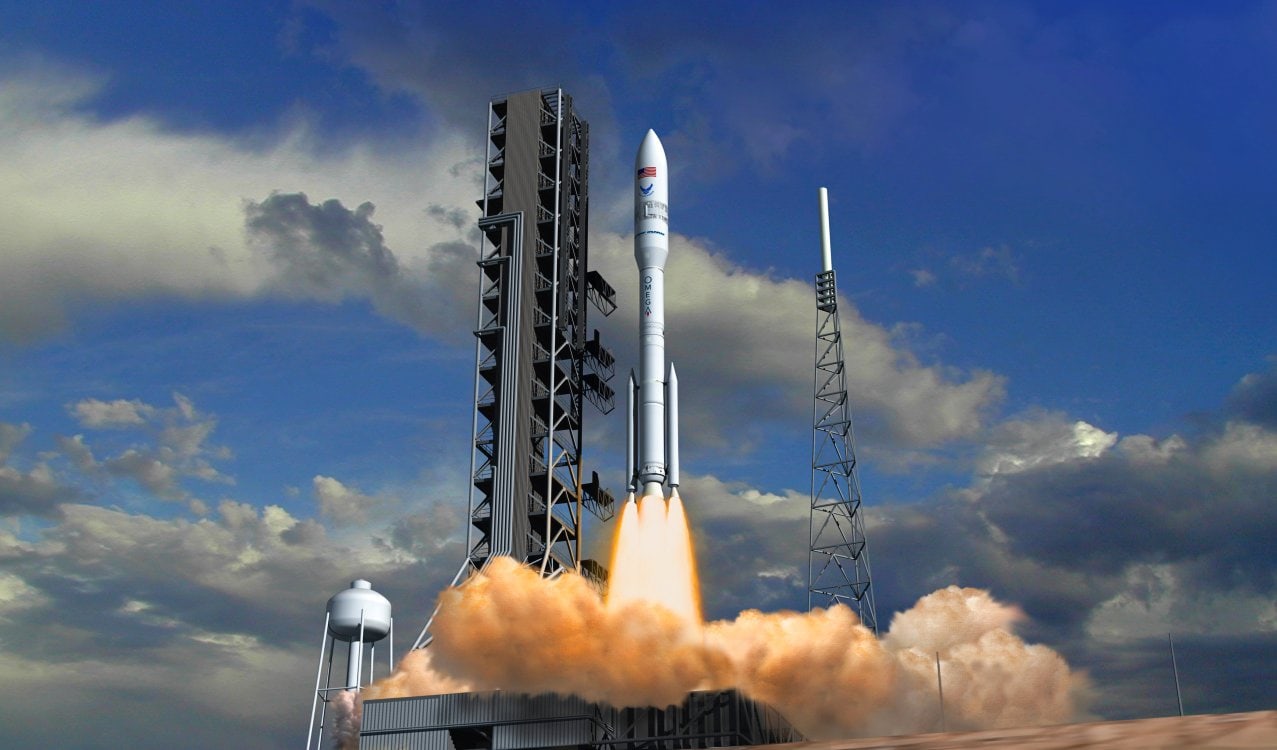
OmegA
- Concept Led By: United States Government (Air Force/Space Force)
- Companies Involved: Northrop Grumman
The OmegA was a medium-lift to heavy-lift launch vehicle concept. The concept itself spent several years in development by Northrop Grumman. On top of this, most of that funding was provided by the United States Government. The idea for the launcher was that it would be able to launch U.S. National Security Satellites and be part of the Air Force’s National Security Space Launch or NSSL replacement program. There were two composite solid rocket stages with a cryogenic upper stage, which would have been developed in partnership with Aerojet Rocketdyne. Blue Origin was going to make this but the team moved on from that. The OmegA consisted of a five-segment Space Shuttle Solid Rocket Booster or SRB, along with its cryogenic second stage.
Due to President Trump’s decision to form the Space Force, all space-related projects and organizations would flow through this. Yet it would be run by the Air Force. While this launch vehicle was for U.S. Government use, they also planned to send commercial payloads up as well. However, the private company launches were likely to be quite expensive. By 2016, development was planned once the Air Force reached a funding decision, which they did in 2018. That was when Northrop Grumman was awarded $792 million for initial OmegA development. Yet in August 2020, over $3.5 billion dollars later, the National Security Space Launch Phase 2 did not include the Omega, canceling the project.
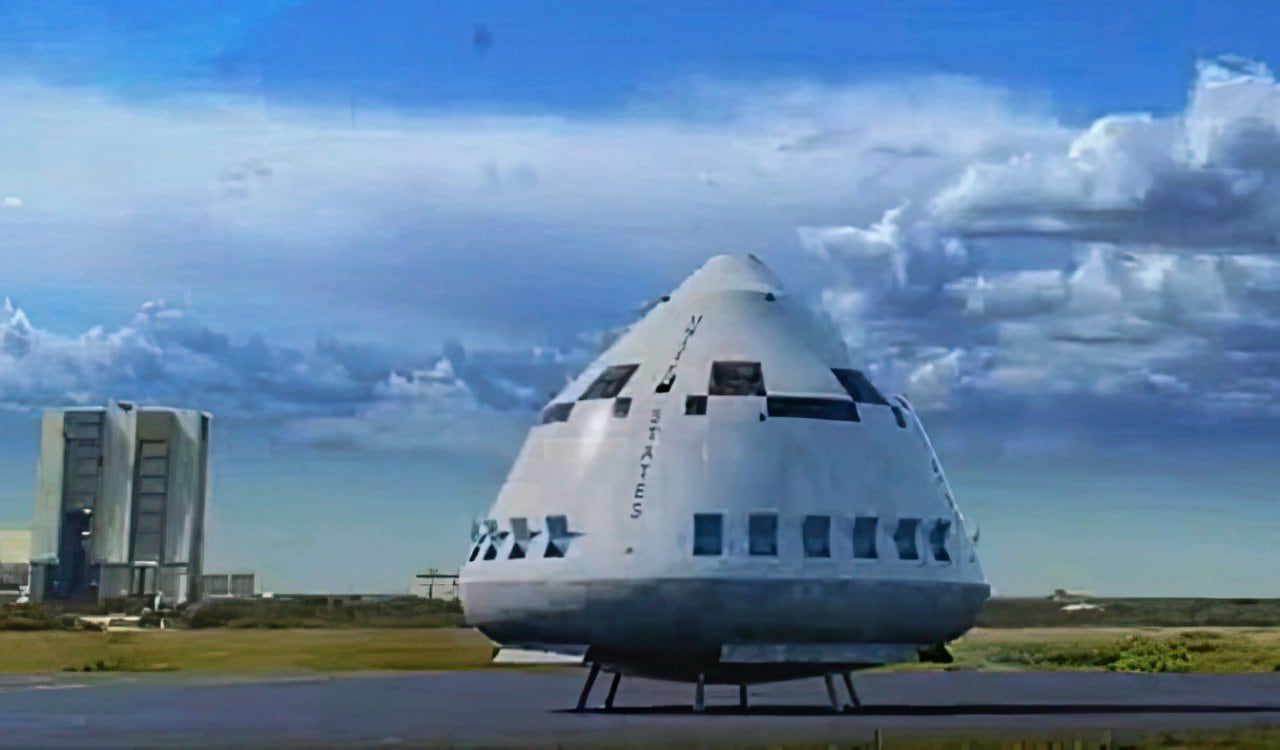
Chrysler SERV
- Concept Led By: Chrysler
- Companies Involved: Chrysler
Yes, you might be surprised to learn that Chrysler, now known as Stellantis North America, used to be in the space business. Back in the 1970s, they proposed a space launch system known as a single-stage Earth-orbital Reusable Vehicle. Today, we mostly know of it as the Chrysler SERV. It was initially designed for the Space Shuttle project and was radically different from the two-stage spaceplanes that most companies came up with. This is likely why NASA never seriously considered it for their Space Shuttle program at all. Today, it is even referred to as just the “Space Onion.”
SERV was going to be a single-stage-to-orbit spacecraft that would simply take off from the already existing Saturn V complexes. It would then land vertically at the Kennedy Space Center for reuse. Most would say it looks a lot like a massively expanded Apollo Capsule, but it had an empty central core. This core was able to carry up to 125,000 lbs of cargo…which was pretty impressive. The SERV could be launched uncrewed for cargo missions too and could eject a cargo capsule as it returned to Earth. If you wanted to do a crewed mission, a separate spaceplane known as the MURP (manned upper-stage reusable payload) would be needed to carry on top of the SERV.
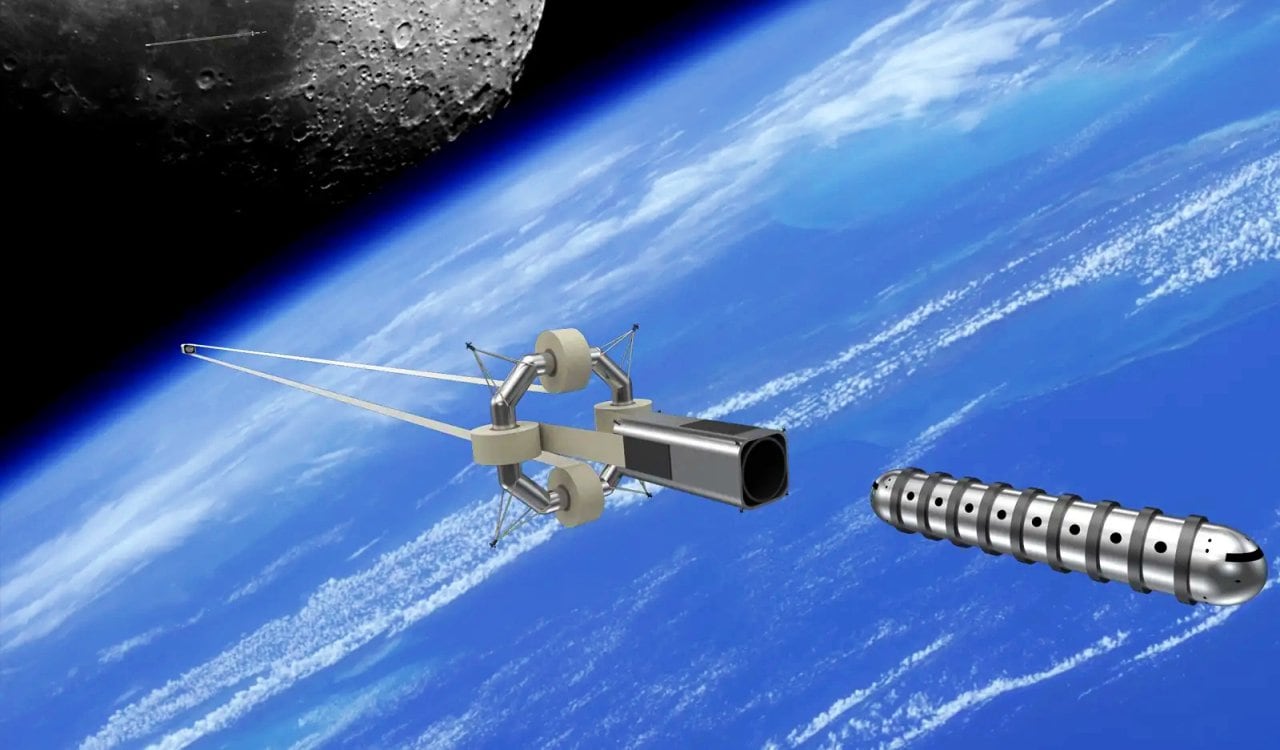
AstraGate
- Concept Led By: N/A
- Companies Involved: TransAstronautics Corporation
Some spacecraft designs that were denied are relatively historic, but this is fairly recent. The TransAstronautics Corporation was involved in this, as they proposed a plan, now known as AstraGate, which involved a transportation system from the Earth to the Moon. Essentially, this system would be built between the Earth and Moon, which happens to be just under 240,000 miles. Yet their plan, in spite of the incredible distance and cost of materials, would be to save money on fuel. Rather than a propellant, the system would involve the transfer of energy and momentum between inbound and outbound vehicles.
This crazy feat would be accomplished thanks to AstraGate stations, of course. The system’s design upfront was to create an affordable opportunity for middle-class people to go both to and from the Moon. Plus, the Moon would have a Lunar Research Center on it. Thus allowing scientists and researchers to conduct experiments. The Innovative Advanced Concepts group at NASA heard the idea in 2018 and then again in 2019. Somehow, it made it through the second round of talks but never further. Spacecraft designs like this may never occur if left to government budgets. Perhaps a very wealthy private corporation could do something like this one day.
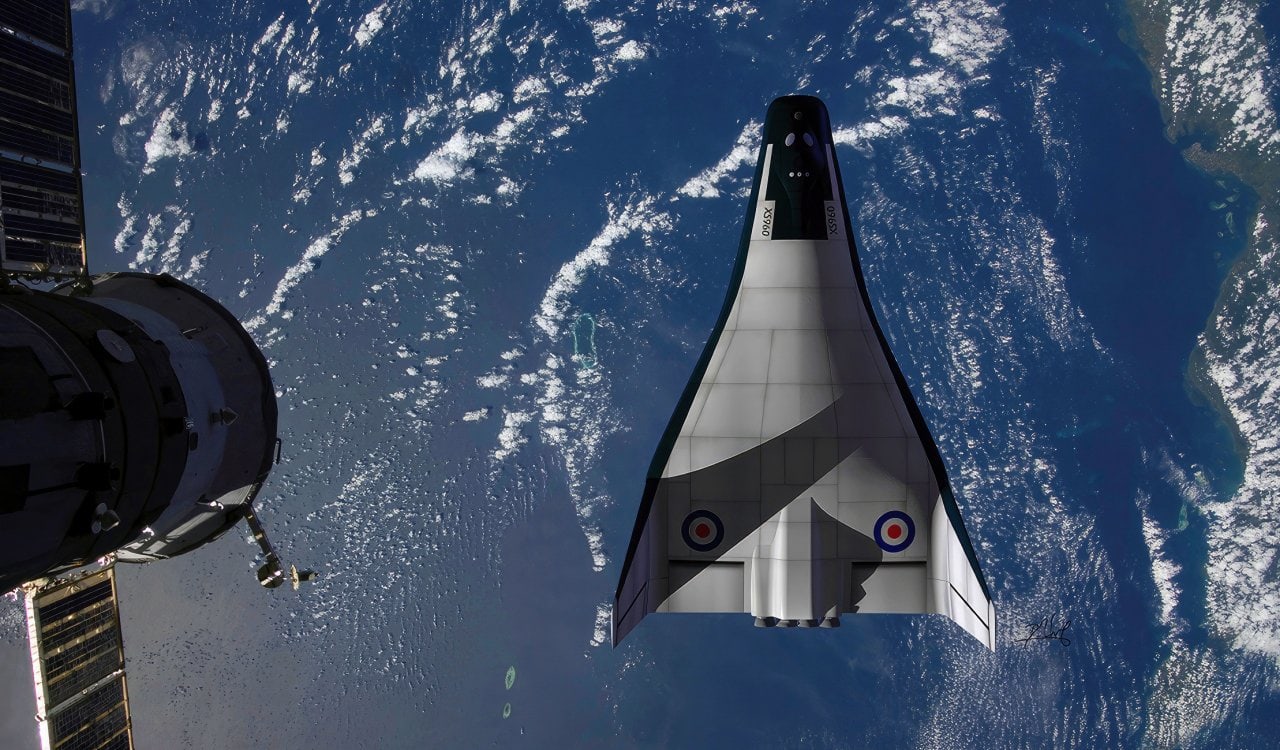
BAC MUSTARD
- Concept Led By: BAC/British Government
- Companies Involved: BAC/BAE Systems
The British Aircraft Corporation came up with something known as the Multi-Unit Space Transport and Recovery Device or MUSTARD. The design of the spacecraft would be to operate as a reusable launch system, which BAC came up with in the 1960s at the height of the USA/Russia Space Race. This is a multi-stage rocket design, and each individual stage seemed to have nearly identical spaceplane modules. These stages were hypersonic vehicles capable of reaching speeds over five times the speed of sound, which means they exceeded MACH-5. These rockets would have launched vertically, with each stage progressively separating during the ascent.
After the separation, the stages/planes would individually fly themselves back toward a landing spot. The final spaceplane is designed to be capable of attaining such an altitude that it would be able to reach a sub-orbital trajectory. It too would then come back but under a controlled return. Due to the parts returning and landing, they could be reused numerous times. The MUSTARD was able to launch payloads of up to 5,000lbs into orbit. While MUSTARD was between 20 to 30 times cheaper than America’s Apollo Program, the British Government was not willing to pay for it. BAC nor its successor, BAE Systems, could afford to make it without financial help. The MUSTARD designs have been utilized heavily and the expertise from all of this helped in the development of other spacecraft designs or equipment.
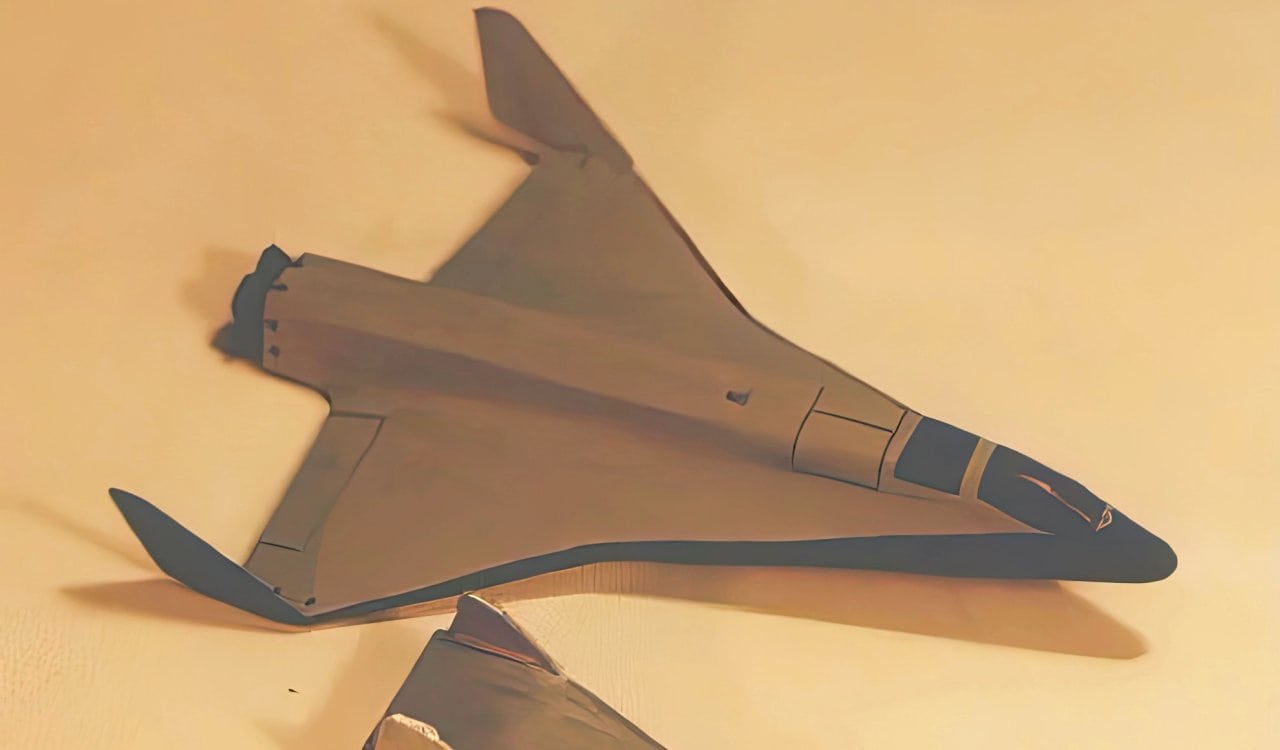
Project Black Horse
- Concept Led By: Air Force/NASA
- Companies Involved: Just The U.S. Government
Project Black Horse or well, just Black Horse, was one of the more unique spacecraft designs at the time of its proposal. Black Horse was essentially studying a proposed winged single-stage-to-orbit spaceplane that would use aerial refueling. The idea of this would be to massively reduce the size of the spacecraft, which would allow it to be roughly the size of an F-16 Fighting Falcon. The United States Air Force was actually behind Black Horse’s design, specifically Captain Mitchell Burnside Clapp. Funny names aside, the Captain was very familiar with aerial refueling concepts as it was employed often in the Air Force to extend combat aircraft performance.
Several others worked on the design, including a smaller model that Robert Zubrin came up with, which he named the Black Colt. The initial proposal for Black Horse came in 1993 but Captain Clapp would leave the Air Force by 1996. Upon his departure, he teamed up with Zubrin to form Pioneer Rocketplane. This unit then proposed a slightly larger version of the Black Horse spacecraft, which they called “Pathfinder.” The Black Horse design seems to be one of the most well-liked among those proposing new spacecraft designs to NASA. Several others have taken from Black Horse to develop their own proposals, including a design by Rocketplane Global Inc.
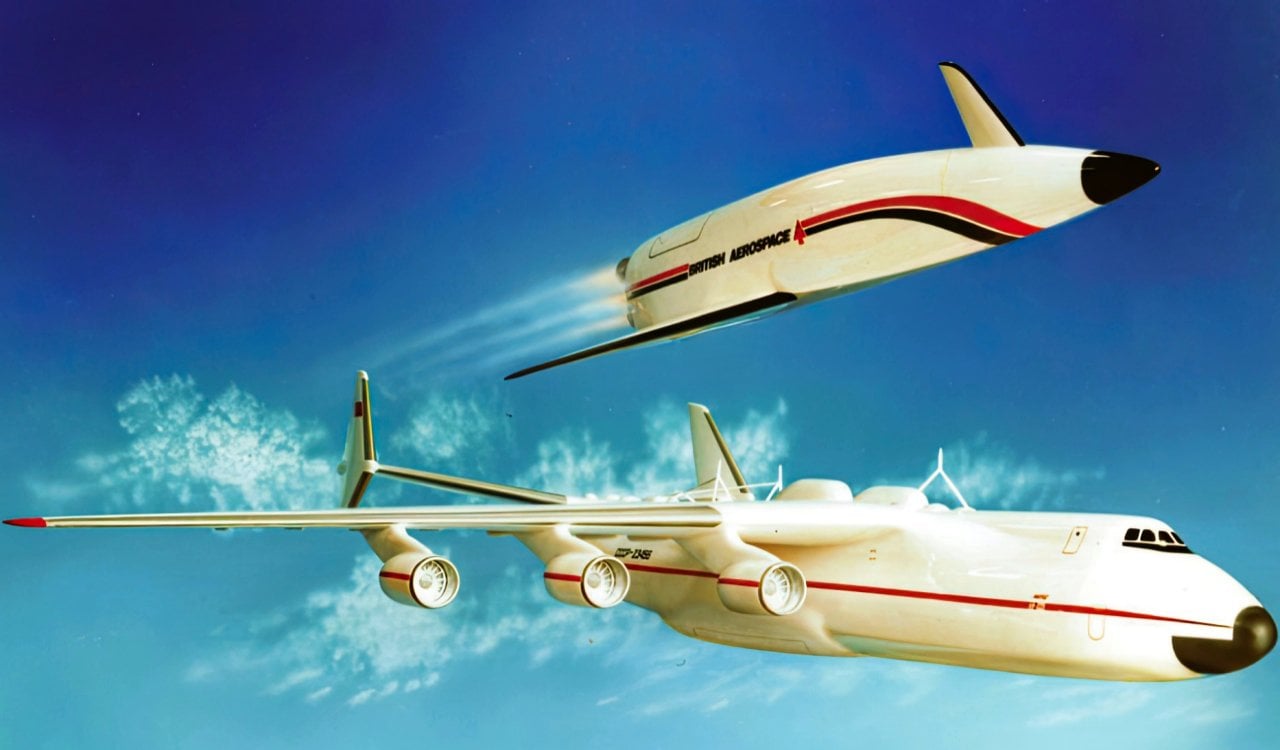
British Aerospace HOTOL
- Concept Led By: N/A
- Companies Involved: British Aerospace & Rolls-Royce
In the 1980s, the British government as well as several British companies wanted to get involved in space. That led to an explosion of spacecraft designs being seen by the British Government. That included one design by British Aerospace and their unique partner in the venture, Rolls-Royce. Known mostly for their high-priced luxury automobiles, people forget that they have been involved in the aerospace industry for a long time. This joint design was a single-stage-to-orbit spaceplane powered by an airbreathing jet engine. This was a reusable, winged launch vehicle which they named HOTOL. An RB545 or Swallow jet engine would be used, but they needed proper fueling. This led to the decision to use a combo of liquid hydrogen and liquid oxygen.
Yet they also wanted to dramatically reduce the amount of oxidizer needed to be carried on board. To do this, their plan was to use atmospheric oxygen as the spacecraft climbed through the low-Earth atmosphere. Oxidizers do tend to be the main source of takeoff weight, so HOTOL would be much smaller than a normal rocket. In fact, the design made it no larger than a medium-haul airliner. There was proof of concept studies done with some positive results, but the issue was getting a space program to be interested. NASA had some interest but not enough to move forward. The relatively new, low-budget European Space Agency seemed to lack any real interest either. Since the British Government did not want to split from the ESA, the HOTOL design never moved forward. This was on top of considerable technical issues.
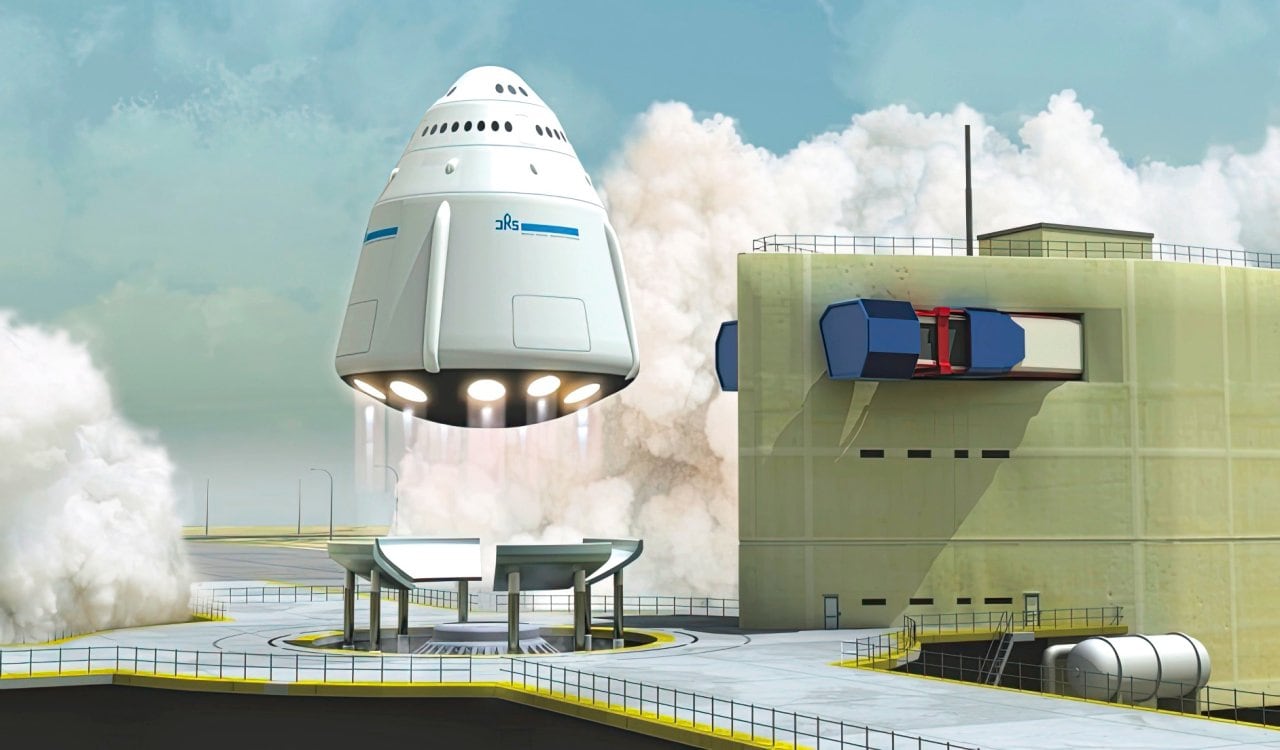
Kankoh-Maru
- Concept Led By:Japanese Rocket Society
- Companies Involved: Japanese Rocket Society, Kawasaki, & Mitsubishi (confirmed)
As we’ve seen by now, the Japanese spacecraft designs do not seem to get very far. Yet this design had some potential. It was a proposed vertical takeoff and landing or VTVL, single-stage-to-orbit, reusable launch system. This design was proposed back in the early 1990s by the Japanese Rocket Society, so to be this aspirational roughly 30 years ago was impressive. The ambitious design was eye-opening at that time and still seems pretty incredible today. They seemed to be pretty set on this being a huge step for them as they named the design the Kankoho-maru. It comes from the very first steam-powered ship in Edo-era Japan, which is important to their culture.
Of course, the Japanese are known for their impressive technology and they have many successful tech companies to prove it. Yet in spite of the impressive tech gurus of the time, this project would be a tough one. However, they had some help. Documents uncovered in the late 1990s show that both Kawasaki and Mitsubishi’s Heavy Industries sectors were set to manufacture the rocket. The amount to cover the development would be 3.8 billion yen, which equated to around $40.4 million in the mid-1990s. However, it seems this cost was just too high for everyone at the time and it never went into development. Had it though, we might be way ahead in space affairs.
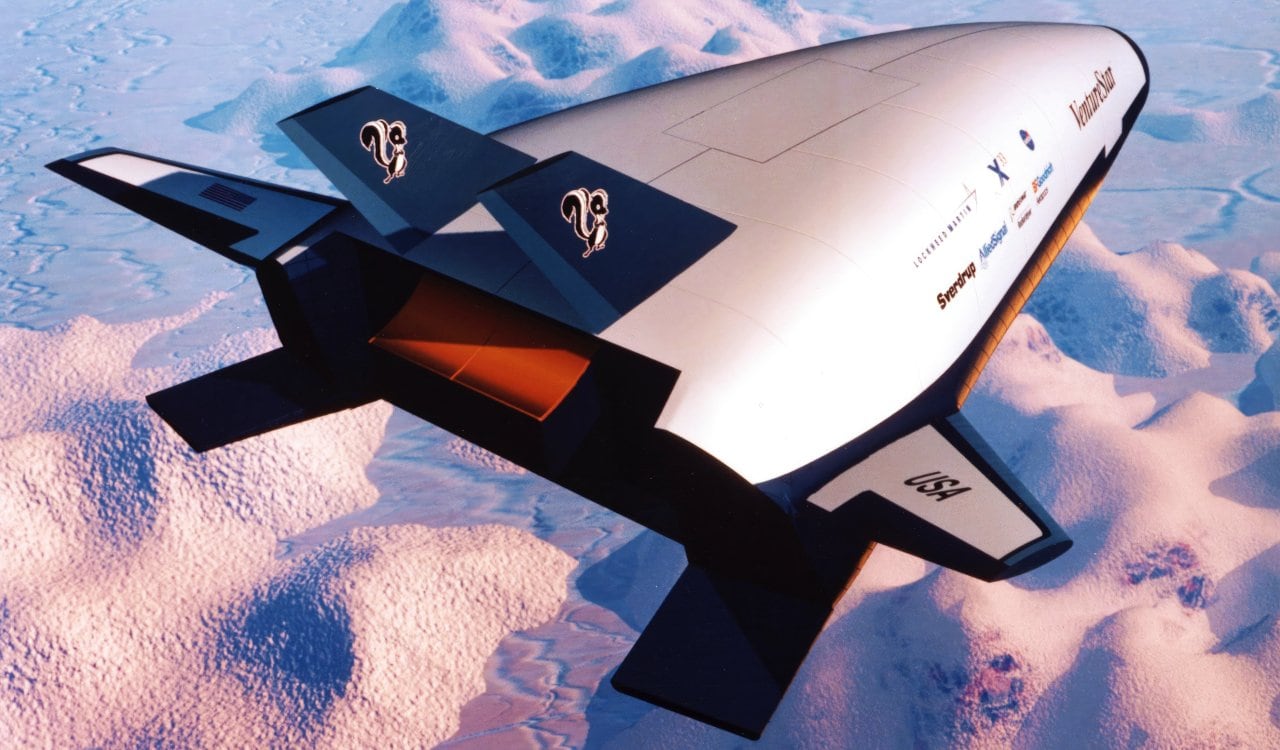
VentureStar
- Concept Led By: NASA
- Companies Involved: Lockheed Martin & BF Goodrich
This SSTO reusable launch system was proposed by Lockheed Martin, and funded by the United States government. The Space Shuttle was great but NASA felt they could do better, which would result in developing a reusable spaceplane that could launch satellites into orbit. Doing so at a fraction of the cost compared to the (then) current Space Shuttle. They needed an uncrewed launcher capable of carrying passengers as cargo. Known as VentureStar, this spacecraft was set to have a wingspan of 68 feet and a length of 127 feet. It was also going to weigh around 1000 tons or 2.2 million pounds.
As you can tell, VentureStar’s intended design was to be the first commercial SSTO vehicle, also the first to launch vertically but return to Earth as an airplane. Flights on VentureStar would have been leased by NASA as needed too. How did this never get off the ground? It mostly came down to failures with the X-33 subscale technology demonstrator test vehicle. After several years of trying and many failures with the X-33 later, funding was canceled by 2001. The X-33 was a less costly demonstrator of the much larger VentureStar. The issue is if Lockheed Martin couldn’t get the X-33 right…VentureStar could never work as one of NASA’s go-to spacecraft designs.
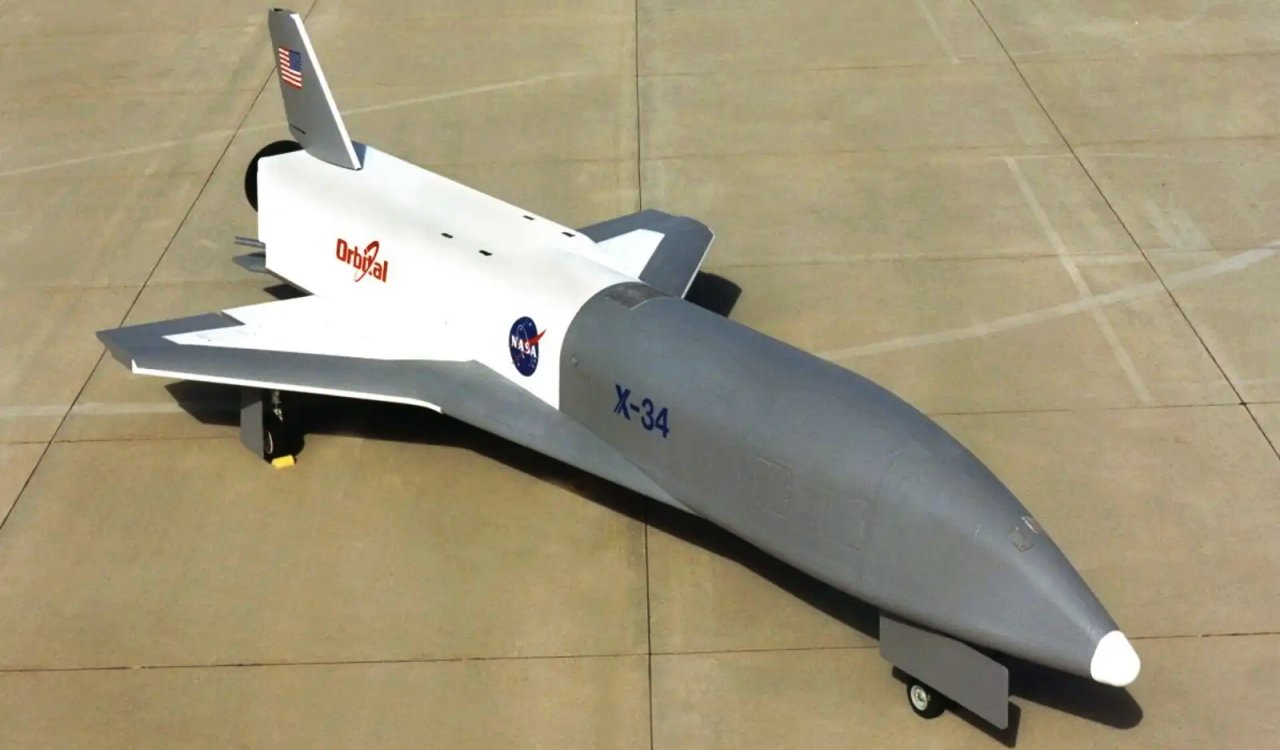
Orbital Sciences X-34
- Concept Led By: NASA
- Companies Involved: Orbital Sciences
You may remember we referenced the X-33 spacecraft that Lockheed Martin worked on as a smaller version of the VentureStar. Yet these “test” models are not specific to any company, leading us to the X-34 rocket. It was meant to be a low-cost testbed for demonstrating several major technologies that could then be used for the Reusable Launch Vehicle program. The plan for the X-34 was for it to be an autonomous pilotless craft that would be powered using the Fastrac liquid-propellant rocket engine. It would be capable of even reaching Mach-8 and even conducting up to 25 test flights annually. This initially began as a program for the suborbital reusable rocket technology demonstrator.
Back in 2001, the first flight vehicle was already near completion but the program ended due to a decreased budget. They had initially planned out using a little under $112 million, with $85.7 million of that going to Orbital Sciences due to being awarded the original contract. $16 million of this was set to come from NASA and other government organizations, and Orbital Sciences planned to use $10 million of its own to adapt the L-1011 carrier to the X-34. Yet in spite of being nearly done, NASA canned the project at the end of March 2001. It was one of the better spacecraft designs that would have helped NASA a lot. However, from 2001 on, NASA’s budget seemed to constantly shrink.

Space Elevators
- Concept Led By: N/A
- Companies Involved: N/A
Space Elevators have been envisioned in some form or another for decades. However, this concept really began to take off in the 1990s and 2000s. Why was this? It probably comes down to the issue of science fiction shows and movies having some form of this in play. Usually, when space elevators are discussed, it revolves around a concept where one is taken into low-orbit at a fast speed. The concept often looks a lot like a vertical hyperloop. The idea is that with these elevators, we can build low-orbit research centers for scientists to work on projects that require little to no gravity.
Yet there will be a need to get cargo and people into this low orbit territory, which is where the elevator comes in. The device that one has to be in to go up into space is where the spacecraft designs for these elevators come in. Though very restricted, we would need a craft to do this as we could not rely on some tube to bring people there. Oxygen and gravity levels will matter as well as pressure on the craft. Yet, as you can likely see, spacecraft designs or concepts like this had a lot of technical limitations. If nothing else, think of the cost it would take to build something from the ground all the way to low-orbit space!
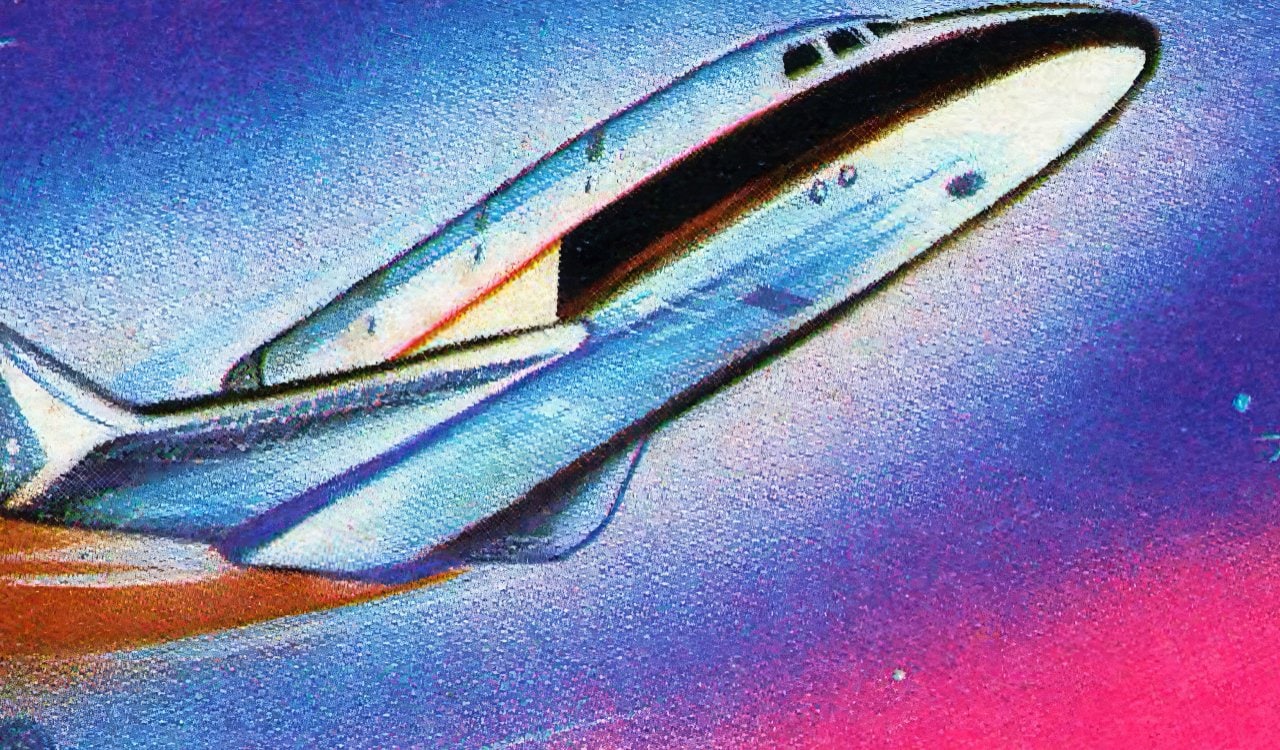
Hermes
- Concept Led By: European Space Agency
- Groups Involved: CNES, ESA, RKA
Hermes was one of the few spacecraft designs coming out of Europe in the 1980s that many felt had potential. The design came from the French Centre National d’Études Spatiales or CNES back in 1975, and later on by the European Space Agency. The idea of the design was to seemingly become larger than the NASA Space Shuttle while resembling the Boeing X-20 Dyna-Soar. By 1985, CNES proposed that they continue the Hermes project, this time under the ESA. The goal was for Hermes to take part in a crewed spaceflight program, which would have launched using the Ariane 5 launch vehicle. By November 1987, the ESA approved the project and things were underway.
The plan then was to start with the pre-development phase, which lasted for 2 years from 1988 to 1990. As long as everything looked good, the ESA planned to clear it for full development. This is where issues occurred, as numerous delays and especially funding problems took place. By 1992, Hermes was completely canceled. Simply put, they could not put together a proper budget to do things and anything they cut would have hurt the performance of the spacecraft. It did not help that ESA’s partnership with the Russian Aviation and Space Agency or RKA meant that did not need to have an independent crewed spacecraft. In recent years, there have been talks about bringing the Hermes spacecraft designs back and creating something new completely under the new-look ESA.
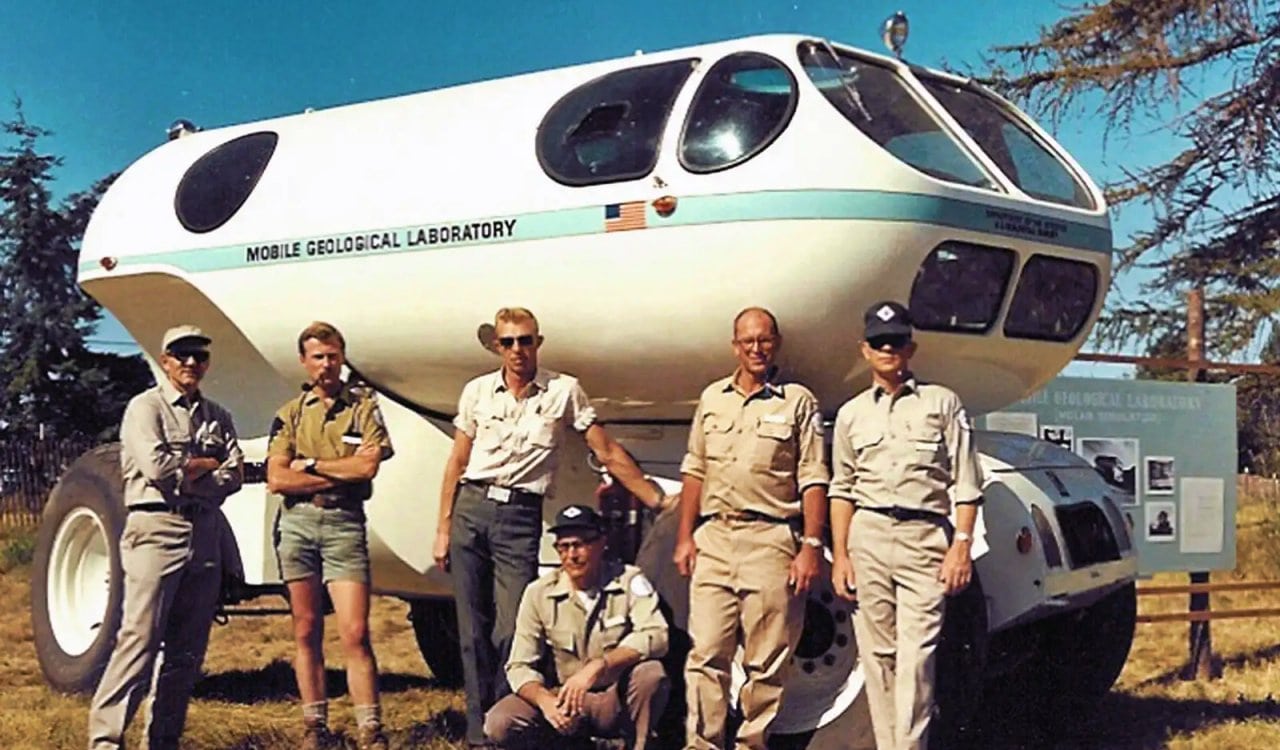
General Motors MOLAB
- Concept Led By: NASA
- Companies Involved: General Motors
Back in the mid-1960s, NASA commissioned General Motors to make one of the first spacecraft designs that could be used as manned lunar vehicles. The goal was to explore the Moon and they needed lunar vehicles to move around in when they reached it. On top of this, they needed GM to make a Mobile Laboratory, also known as a MOLAB. The lab prototype was supposed to be 20 feet in length and weigh a little over 4 tons. The lunar rover was going to carry this mobile lab within a closed cabin. This meant it needed to be pressurized and operate like a mobile lab on Earth. It also needed to be capable of sustaining at least two astronauts for up to 2 weeks.
The plan was to mostly conduct geological studies, considering we wanted to see how closely related Moon and Earth rock was to one another. We assumed that there would be similarities with Moon rocks as well as those found on other planets like Mars. Yet this would give definitive proof. The rover actually could manage a speed of 21 mph and go a little over 60 miles on one charge. It used a modified Corvair engine to accomplish this. However, one thing that kills spacecraft designs before launch is often the size. This was the issue for the MOLAB. It was so big that it would have taken the entire Saturn rocket to launch it to the Moon. NASA decided against using this beast of a machine and opted for a slimmer moon buggy design.
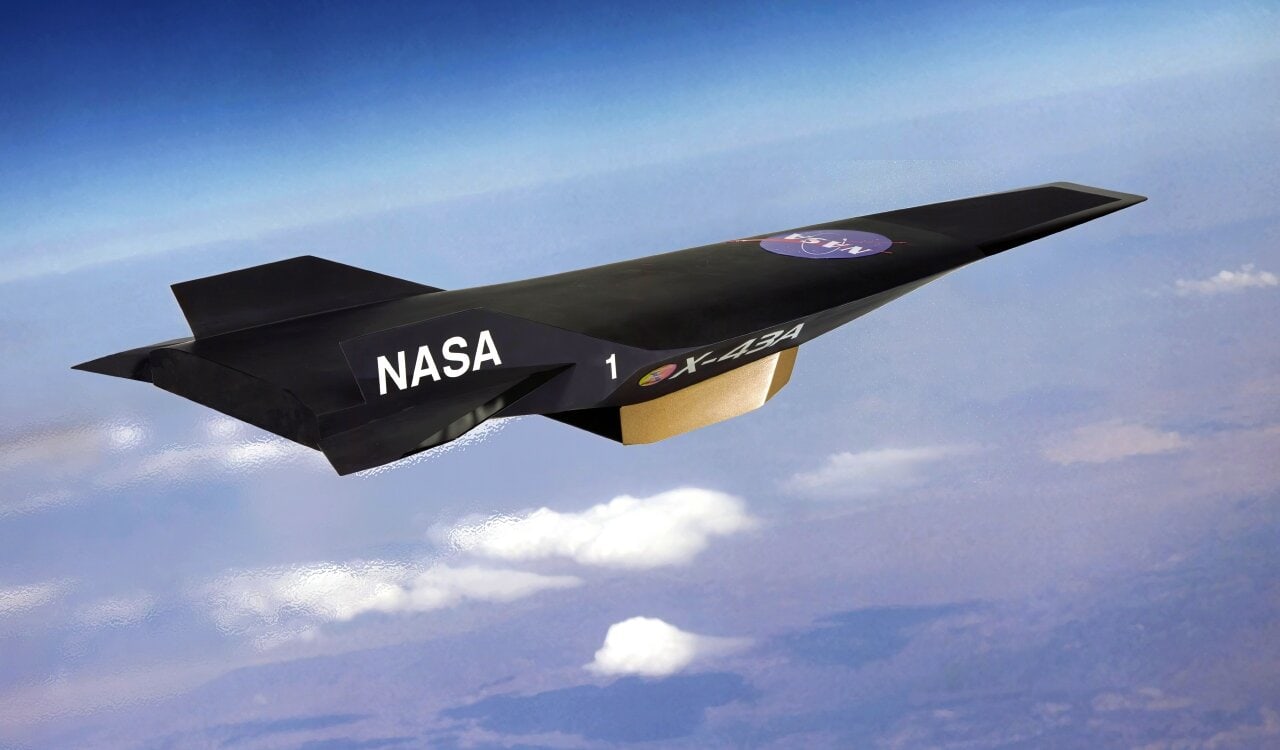
Hypersonic Planes
- Concept Led By: N/A
- Companies Involved: Lockheed Martin, Boeing, Northrop Grumman, General Electric, Airbus, & More
During the 1960s and 1970s, several companies and engineers proposed plans to NASA and other space agencies to make spacecraft designs using hypersonic planes. Of course, a hypersonic plane is anything that can reach or surpass Mach-5. Basically, they move faster or at the speed of sound. Yet early hypersonic planes were not exactly useful and were often dealing with several technical limitations at the time. Safety concerns were so high that most space agencies, especially NASA, refused to consider anything utilizing hypersonic plane concepts.
Why do we consider hypersonic planes for spacecraft designs? Early on, these planes were able to go above the clouds and reach near-space boundaries. The notable boundary here is called the Kármán line, which planes are unable to cross because they use engines that burn air. There is no oxygen in space, so hypersonic plane designs could never take us to real space. However, this is likely to change soon. Two experimental planes (SpaceShipOne and North American X-15) use rocket engines rather than jet engines, allowing them to burn liquid fuel instead of air. We will likely be seeing these in use before too long.
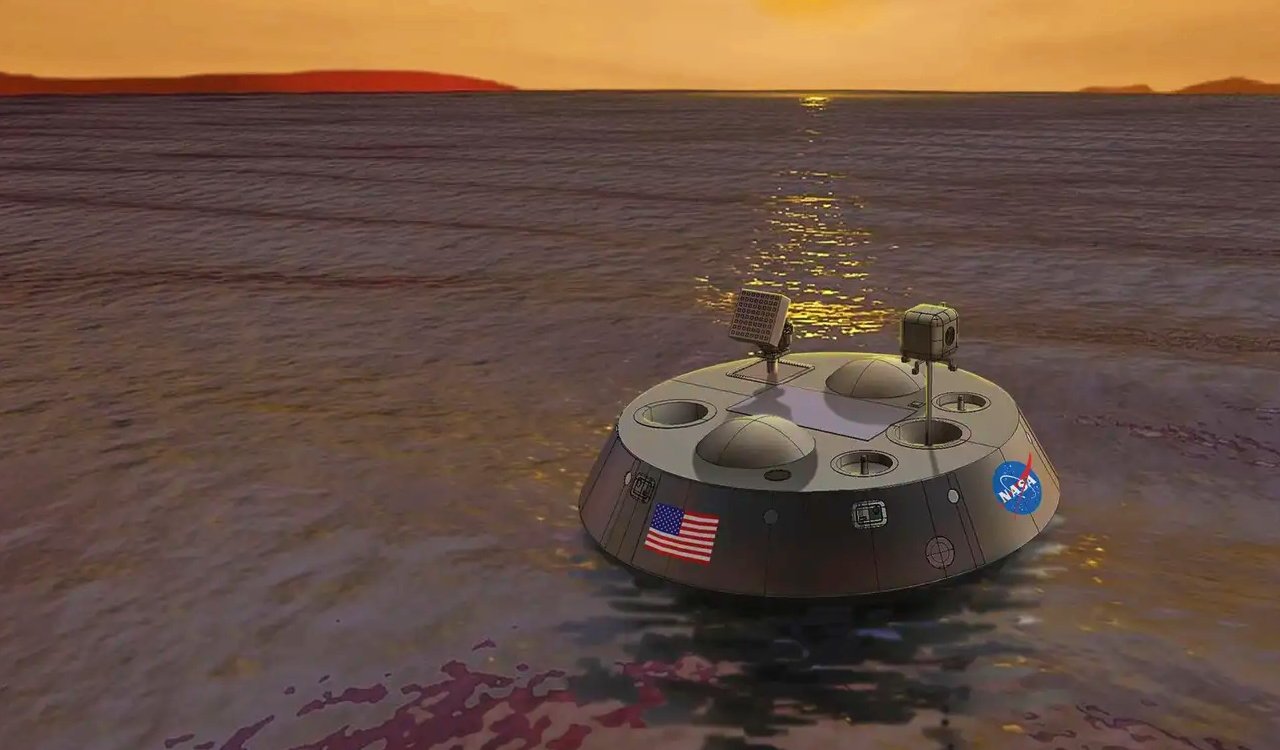
Titan Mare Explorer (TiME)
- Concept Led By: N/A
- Companies Involved: Proxey Research
It needs to be highlighted that the Titan Mare Explorer, also known as TiME, is not a completely dead concept. Simply put, sometimes spacecraft designs are good ideas but the proposals are made too early. Proposed back in 2009 by Proxey Research, it was designed to be part of NASA’s Discovery Program. TiME is a lander specifically made to use for Saturn’s notable moon, Titan. The entire goal of the TiME craft is to be used to measure the “organic constituents” on Titan and perform the very first nautical exploration of an extraterrestrial sea. It would analyze the nature of Titan and even observe the shoreline.
Discovery-class missions at the time were given a hard cap of roughly $425 million, which didn’t count the launch vehicle. Since it was literally made to use for a program where this exact concept was useful, it made sense to go with it. NASA even liked the idea, which is why the TiME mission design reached the finalist stage during the Discovery mission selection process. It did not get picked and the United States Senate never marked it for funding even up to 2013. While the TiME spacecraft was useful, a Titan submarine was later proposed. Thus, the Titan Mare Explorer might never make it into space.
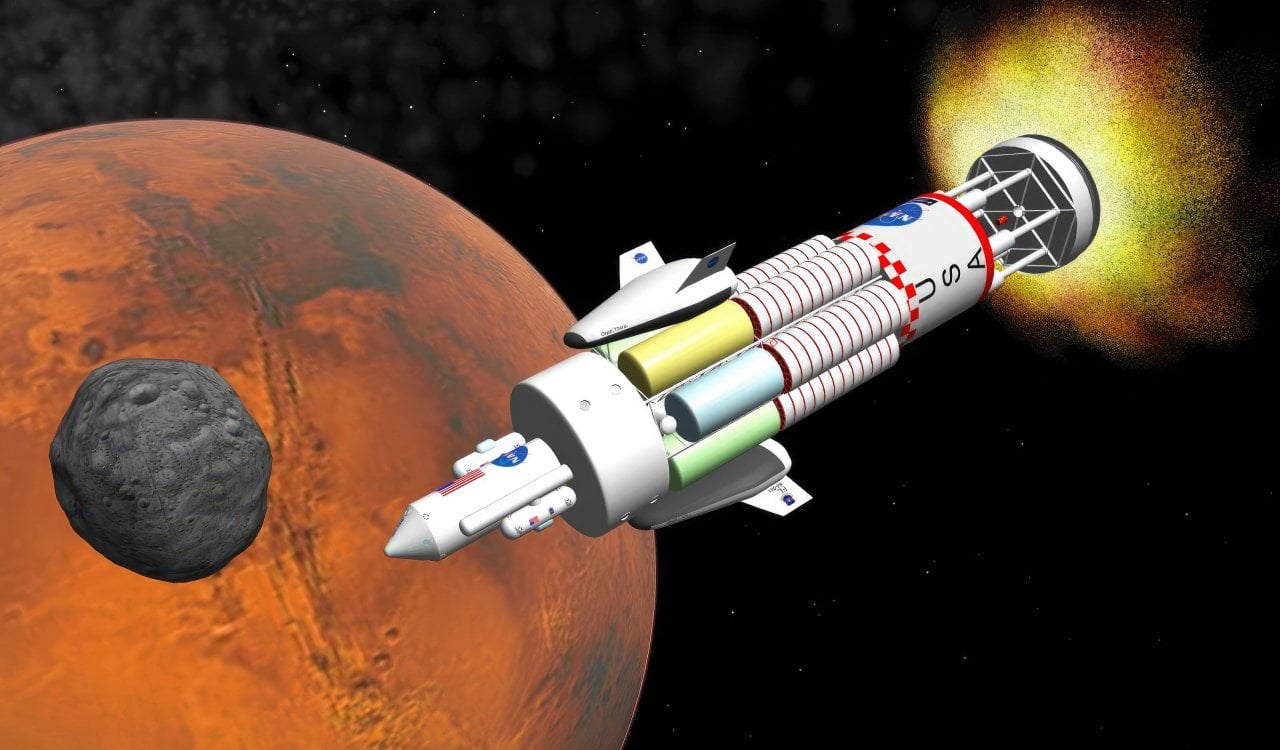
Project Orion
- Concept Led By: NASA, DARPA, U.S. Air Force
- Companies Involved: N/A
Project Orion is probably one of the most notable on this list and for good reason. It should be noted that this did not involve a single spacecraft but rather, a spacecraft concept. The study was conducted sometime between the 1950s and 1960s by DARPA, NASA, and the U.S. Air Force. The goal? To measure the efficacy of a starship that would be propelled by a series of atomic bomb explosions behind the craft. Known as nuclear pulse propulsion, looking back the idea seemed odd. Early versions of these spacecraft designs were proposed to, if you can believe it, take off from the ground. Later versions, however, only involved versions that took off only in space.
A total of 6 non-nuclear tests were conducted using these models, but the project would be abandoned. This was due to many reasons, but one of the biggest was the Partial Test Ban Treaty. This did not explicitly target spacecraft but rather, involved the treaty to stop doing random tests with nuclear technology. Yet it did involve not testing things in space because of the worry of nuclear fallout. The entire idea behind using nuclear energy to go to space was connected to a concept that came from Russian explosives expert, Nikolai Kibalchich, back in 1881. Later on, men like Robert A. Heinlein and Harmann Ganswidt independently came up with similar ideas.
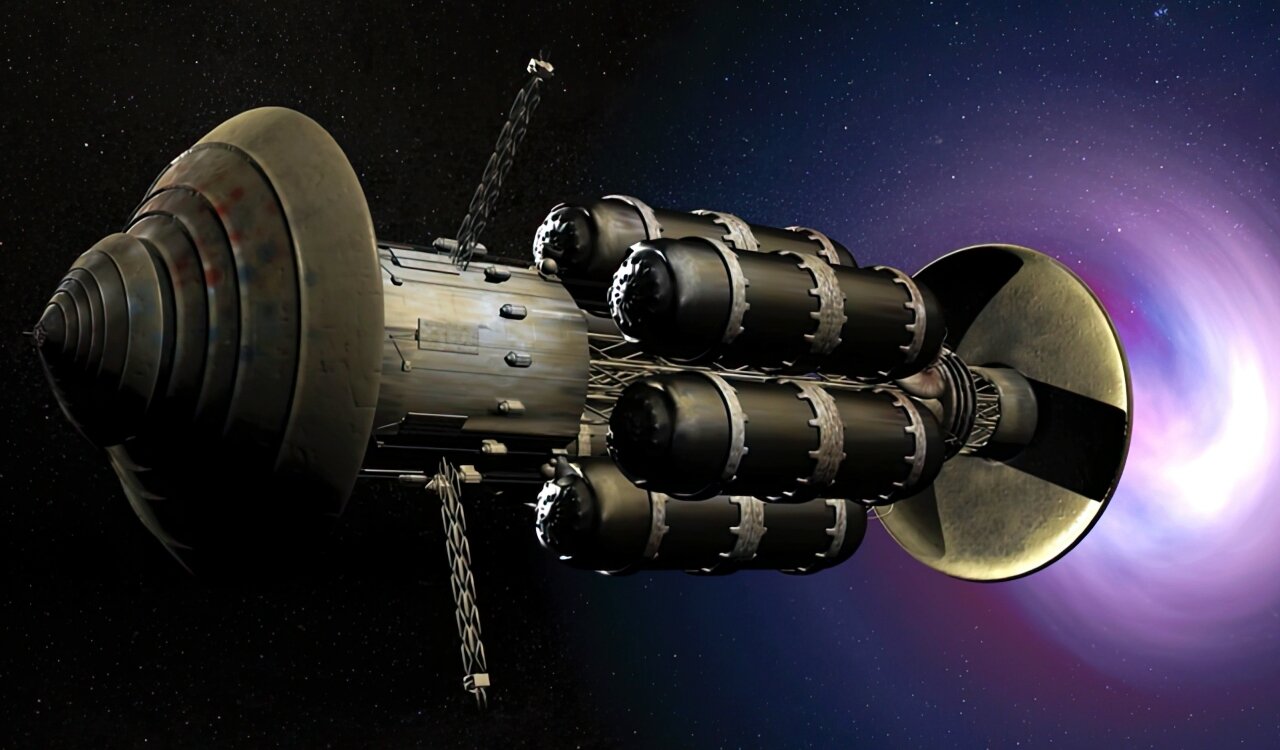
Project Longshot
- Concept Led By: NASA/U.S. Naval Academy
- Companies Involved: N/A
There is perhaps no way we could ever name something better than Project Longshot. This real idea was, to put it lightly, exactly as advertised. This involved one of the more ambitious mission concepts and had one of the spacecraft designs that was already kind of “iffy.” The roughly 400 tonnes (or 441 tons) spacecraft was intended to be uncrewed and fly to not just the end of our solar system but go all the way to orbit around Alpha Centauri B. How would it be powered? Well by nuclear pulse propulsion, of course! You didn’t think this was going to be called a longshot and expect a “good” idea for propulsion, right? The concept was developed by the United States Naval Academy and NASA from 1987 to 1988.
If it was to be cleared for full development, it was going to be built at the Freedom Space Station. It was our precursor to the International Space Station, for those unaware. The biggest issue with Longshot was that it was not considering future concepts or tech. The developers only focused on their present-day tech from the late 1980s. They felt they could use a long-living nuclear fission reactor to power everything. Though only generating 300 kilowatts at first, it would then be powered by several lasers in the engine that would ignite inertial confinement fusion. While even today, this is not exactly a terrible concept, it would take forever to reach Alpha Centauri B, well beyond our lifetimes. Longshot, this surely was.

Sea Dragon
- Concept Led By: N/A
- Companies Involved: Aerojet
While some science fiction shows and films have sort of used this idea, it was never as wild as the real thing. Developed by Robert Truax while he was working at Aerojet in 1962, one of the many spacecraft designs he came up with was the now-infamous “Sea Dragon.” The idea was that a rocket would take off from the ocean. Of course, it was technically a floating rocket but still. Funny enough, while NASA did have some interest, one of the first private companies interested in space exploration was too, Todd Shipyards. Yet neither decided to bite.
At dimensions of just under 500 feet long and 75 in diameter, it would have been the largest rocket ever built. Keep in mind that this was a fully conceived concept too, unlike many of the proposals you see today. Among rockets that have been fully conceived but never built, the Sea Dragon is far and away the largest one. In terms of its payload into low Earth orbit, it was equaled only by the Interplanetary Transport System. The Sea Dragon was designed at the rough 600 tons limit, so it was understandably going to be useful for some ideas NASA had. However, the cost and also the mere idea of taking off from the sea just never made a lot of sense.
Where Do We Find This Stuff? Here Are Our Sources:
United Nations
National Aeronautics and Space Administration (NASA)
National Oceanic and Atmospheric Administration (NOAA)
Defense Advanced Research Projects Agency (DARPA)
European Space Agency (ESA)
Japan Aerospace Exploration Agency (JAXA)
British Interplanetary Society (BIS)
British Aerospace Systems (BAE)
United States Air Force (USAF)
United States Space Force (USSF)
Russian Aviation and Space Agency (RKA)
Massachusetts Institute of Technology (MIT)
Harvard University
Stanford University
Cornell University
Lockheed Martin (LM)
The Boeing Company
SpaceX
General Motors (GM)
Chrysler
Northrop Grumman
Aerojet
Rockwell International
TransAstronautics Corporation
Rolls-Royce
Smithsonian Institute
American Nuclear Society (ANS)
